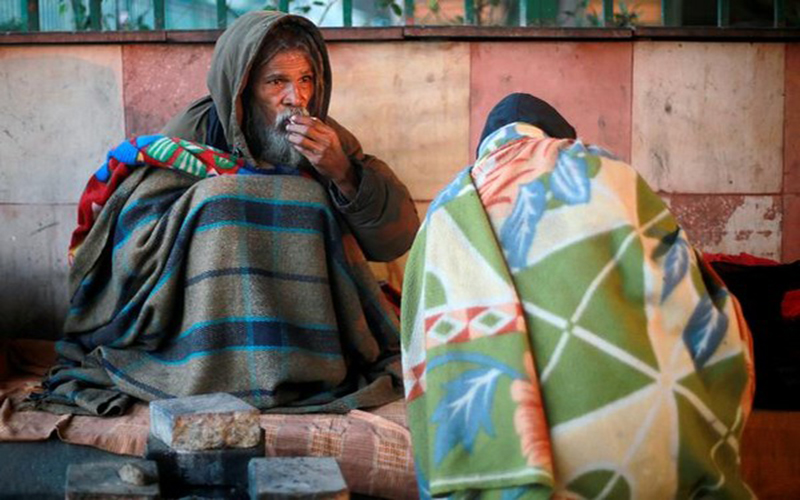New Delhi: The national capital on Thursday witnessed another chilly morning with the mercury dipping to 6 degrees Celsius and humidity levels reducing visibility to 200 metres.
A cold wave warning had been issued by the Indian Meteorological Department (IMD). The agency had also stated that the night temperature in Delhi and its surrounding regions could further drop to around 4 Degrees Celsius in the next couple of days. The temperature dropped to 5.1 Degrees Celsius in the early hours yesterday, making it the coldest December day since 2015.
According to Skymet, a private weather forecaster, “The northern plains of the country come under tight grip of severe winters from December 15 till February 15. During this time, plains of the country come under frequent cold day/ cold wave conditions. The cold day conditions occur when any weather system is moving over the area which causes clouding thus leading to falling in temperatures. After the passage of the system, winds are generally dry and cold and therefore result in a dip in minimums. Whenever minimum temperatures are 4-5°C below their normal, it is then termed as a cold wave condition.”
If one looks closely, in Delhi the winter season has become synonymous with air pollution. As per the state run-SAFAR, the overall air quality of the region was 352 in the morning which falls in the ‘very poor’ category.
The AQI between the ranges of 51 to 100 is considered as satisfactory, 101-200 is moderate, 201-300 falls under the category of poor. 300-400 is considered as ‘very poor’ and range between 401-500 falls under the category as ‘hazardous’.
At Dhirpur, the AQI was 311 at 9:30 am, while in Mathura Road area it dipped to ‘very poor’ category at 372.
Furthermore, AQI near Pitampura, Airport, Terminal 3 and Delhi University stood at 362, 322 and 409, respectively.
A new research paper titled ‘The Study, called the India State-Level Disease Burden Initiative’, published in The Lancet Planetary Health journal revealed that one out of every eight deaths in India is attributable to the menace of air pollution.
The report further revealed that the average life expectancy in India would have been 1.7 years higher if the toxic air level was less than the minimal level causing health issues.
“Air pollution now contributes to more disease burden in India than non-communicable diseases caused by tobacco use. The polluted air causes lower respiratory infections, chronic obstructive lung disease, heart attacks, stroke, diabetes, and lung cancer,”stated the study.
Furthermore, the report suggested that the national capital had the highest annual population-weighted mean Particulate Matter 2.5 last year, followed by neibhouring Uttar Pradesh, Bihar, and Haryana. All had mean values greater than 125 µg/m3. Of the 1.24 million deaths attributable to air pollution, more than half were people below 70 years.
“In India, the major sources of ambient particulate matter pollution are coal burning for thermal power production, industrial emissions, construction activity and brick kilns, transport vehicles, road dust, residential and commercial biomass burning, waste burning, agricultural stubble burning, and diesel generators,” the study stated.
[source_without_link]ANI[/source_without_link]

